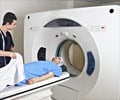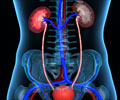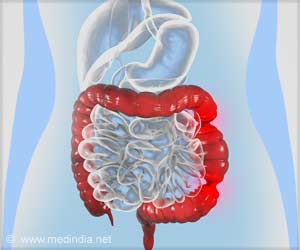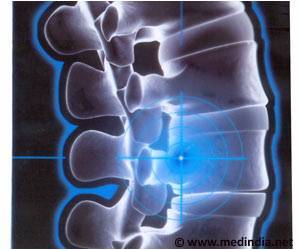The Australian Nuclear Science and Technology Organisation (ANSTO) and the Brindle Laboratory at Cambridge University, UK have signed an agreement to develop sophisticated imaging methods for early detection of tumour responses to therapy. It will be a three-year project, using Positron Emission Tomography (PET) based radiopharmaceuticals.
ANSTO Project Leader, Dr Suzanne Smith, says the collaboration also takes the scientific community one step closer to personalising medicine."We are living in a world where we now understand that genetics can have a significant effect on biological processes, such as metabolism," said Smith. "Through this knowledge we also know that people respond differently to treatment. This work will be significant in optimising treatments and reducing side effects in the long term.
"The research will develop non-invasive methods of monitoring treatments which will undoubtedly improve their rationalisation and contribute towards the goal of personalising medicine," she said.
The research is focussed on merging and capitalising the strengths of PET and Magnetic Resonance Imaging (MRI) technologies, both of which are already used to diagnose and monitor disease. The key to this research is to vastly improve the imaging they provide, with a focus on treatment efficacy and correct prescription based on the individual.
The Cambridge collaboration will do this by applying an exciting new platform technology developed by ANSTO under the guidance of Smith. Currently patented in Australia, the United States and Europe, this technology is known as SarAr which utilises an isotope called copper 64 (Cu64). SarAr is a ligand or 'cage' which holds the copper securely to a target molecule while travelling through the body as it emits radioactive signals to a PET camera. This ensures that a clear image of the target agent or drug is obtained.
"Although copper 64 has long been known in research to be a good PET imaging tool, it has been a challenge to secure it to the target agent to remain attached to cancer-treating molecules while travelling through the body," Smith said. "This is vital if doctors are to image exactly where a drug goes and ultimately determine if a treatment is suitable or is actually doing its job."
Advertisement
The project is split into two focal points: First the SarAr technology will be used to radiolabel the C2A protein and the resulting agent will be evaluated as a copper 64 PET imaging agent for detecting tumour cell death; and second, SarAr will be used to radiolabel nanoparticles and be evaluated as a potential combined PET/MRI imaging agent.
Advertisement
"The key to the SarAr technology is that it enables the use of the long lived
copper 64 PET isotope in any hospital, without the need for critical equipment such as a cyclotron. Its 12.7 hour half-life means the radioactive compound can easily be transported to hospitals locally and nationally."
The wide availability of this type of PET isotope means patients in the wider community will be able to access high end imaging technology which is often centralised to major capital cities.
"The flexibility of SarAr and its ability to be attached to molecules and nanoparticles means we will also be able to use PET imaging to conduct risk assessment of products in clinical trials which can be used to determine how much treatment is getting to the desired site and non-desired site, allowing for more accurate patient treatment," she said. "This will ultimately provide better patient information and help to ensure the safest products get to market."
The project is part of the ARC Centre of Excellence for Anti Matter Matter Science program and funding of $600,000 was provided through an International Science Linkages grant. The Centre draws together many of the world's leading experts in antimatter matter science. Their goals are to understand the fundamentals how antimatter or positrons (like in PET) interact with matter. This fundamental information will help in the design of the next generation PET imaging technologies.
Source-Medindia
GPL/SK









